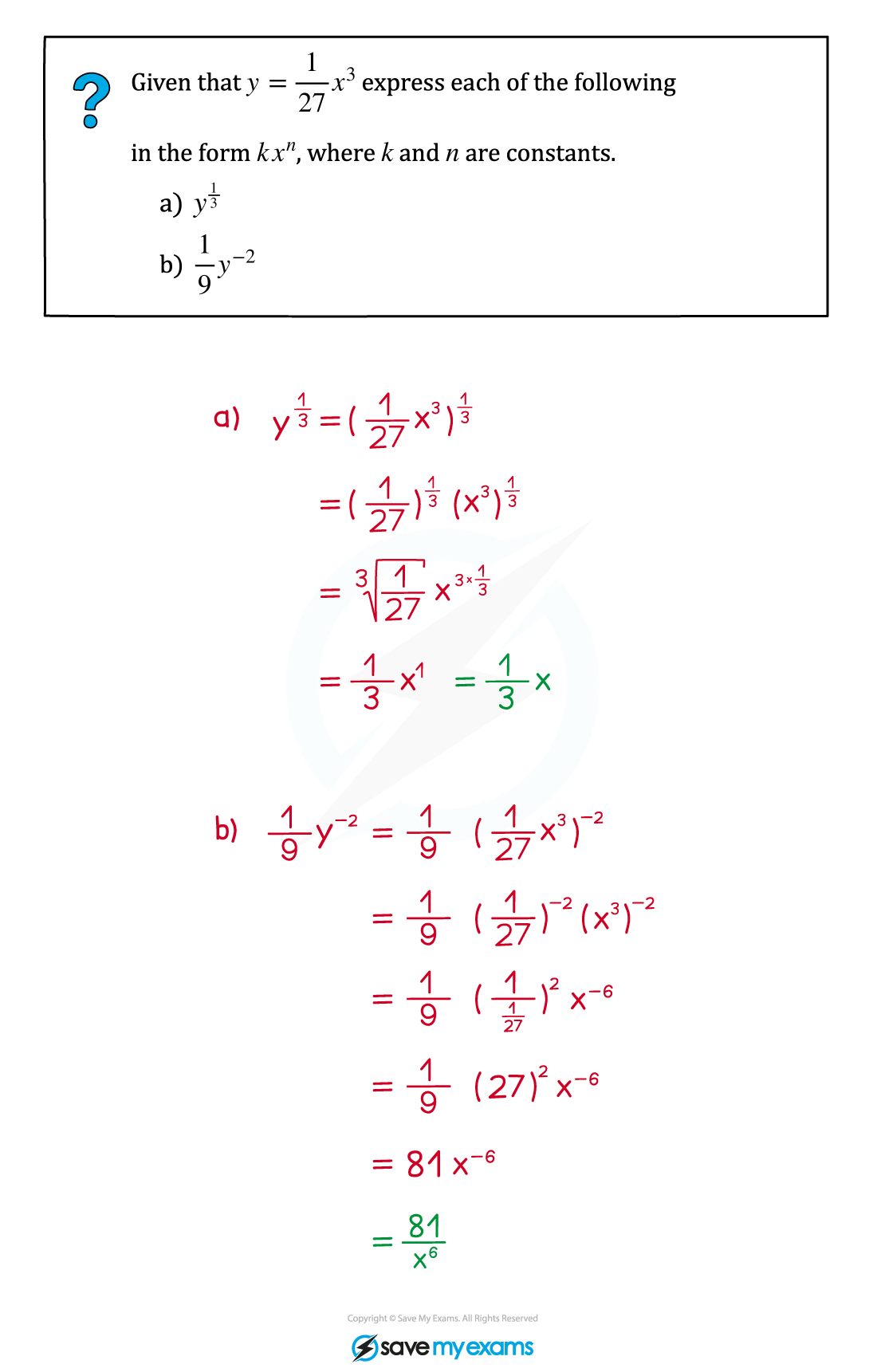Indices (AQA GCSE Further Maths) : Revision Note
Laws of Indices
What are the laws of indices?
There are lots of very important laws (or rules)
It is important that you know and can apply these
Understanding the explanations will help you remember them
Law | Description | Why |
anything to the power 1 is itself | ||
to multiply indices with the same base, add their powers | ||
to divide indices with the same base, subtract their powers | ||
to raise indices to a new power, multiply their powers | ||
anything to the power 0 is 1 | ||
a negative power is "1 over" the positive power | ||
a power of an nth is an nth root | ||
a fractional power of m over n means either - do the the nth root first, then raise it to the power m or - raise it to the power m, then take the nth root (depending on what's easier) | ||
a power outside a fraction applies to both the numerator and the denominator | ||
flipping the fraction inside changes a negative power into a positive power |
Changing the base of a term
Sometimes expressions involve different base values
You can use index laws to change the base of a term to simplify an expression involving terms with different bases
For example
Using the above can then help with problems like
Examiner Tips and Tricks
Index laws only work with terms that have the same base, so something like 23 × 52 cannot be simplified using index laws
Worked Example

Solving Equations With Indices
How do I solve equations with indices using a change of base?
If two terms over the same base are equal, their their powers are equal
If
then
This is not true if there are other coefficients or terms in the way
e.g.
or
This is not true if the bases are different
e.g.
...
...unless they can be changed into a common base
have bases 4 and 8 which can be written as 22 and 23 (over a common base of 2)
Put brackets around your change-of-base to be able to use the index law
How do I solve equations with rational powers of x?
Use
to convert a rational power into a root
If
then
raise both sides to the power n
becomes
which raises to the power 5 to give
solutions are
don't forget plus-or-minus rooting,
, when n is even
Sometimes there is more than just x in a root
treat roots like brackets
cubes to
, which rearranges to
solution is
you can root a negative if its an odd root (not even)
so
Examiner Tips and Tricks
In a non-calculator paper, choose which way to use
to make calculations easier
can be written
or
but the second way is easier to solve (the first way requires you to work out 84 then cube-root it!)
Worked Example
Solve the following equations
(a)
.
Rewrite the right-hand-side of the equation using indices.
Change the bases so that all of the bases are the same using and
.
Rewrite using the brackets law.
Rewrite the right-hand side using the law of indices:
.
Now that the bases are the same with no extra components the powers can be equated and solved.
(b).
Isolate the term by adding 12 and dividing by 3.
Rewrite the left-hand side by converting the rational power into a root.
Square root both sides, don't forget there could be a positive or a negative answer.
Cube both sides, remember to cube both the positive or a negative solutions.

You've read 0 of your 5 free revision notes this week
Unlock more, it's free!
Did this page help you?

